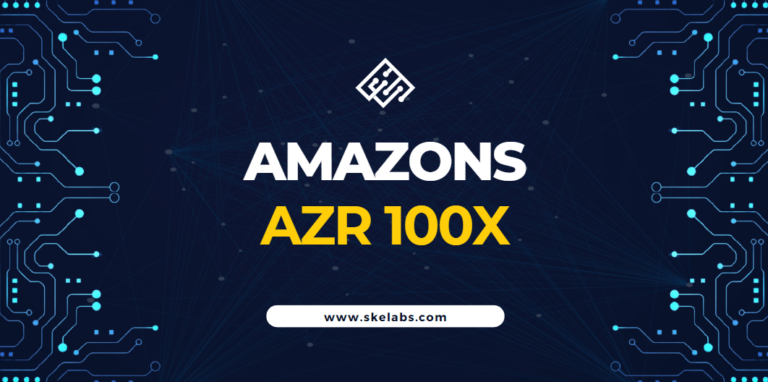Smart Homes: The Integration of IoT Devices for a Connected Living Experience
In the era of digital transformation, the concept of smart homes has emerged as a game-changer, promising residents a seamless and interconnected living experience. The integration of Internet of Things (IoT) devices has revolutionized the way we interact with our homes, providing unprecedented levels of automation, efficiency, and convenience.
In this article, we explore the diverse landscape of smart homes, examining the integration of IoT devices and the profound impact they have on creating a truly connected living experience.
Table of Contents
1. Understanding Smart Homes and IoT:
a. Definition of Smart Homes:
A smart home refers to a residence equipped with a network of interconnected devices and systems that can be remotely monitored and controlled. These homes leverage IoT technology to enhance the efficiency, security, and overall comfort of the living space.
b. Role of IoT in Smart Homes:
The Internet of Things (IoT) forms the backbone of smart homes, enabling devices to communicate with each other through a network. IoT devices, embedded with sensors and connectivity features, collect and exchange data to facilitate intelligent decision-making.
2. Key Components of a Smart Home:
a. Smart Lighting Systems:
IoT-enabled lighting systems allow users to control the brightness, color, and scheduling of lights through smartphones or voice commands. These systems enhance energy efficiency and create personalized lighting atmospheres.
b. Thermostats and HVAC Systems:
Smart thermostats and HVAC systems enable precise control of home temperatures. They learn user preferences, adapt to patterns, and can be remotely adjusted for energy conservation, providing both comfort and cost savings.
c. Smart Security Systems:
IoT-based security systems include smart cameras, doorbell cameras, and motion sensors. These devices offer real-time monitoring, alerts, and remote access, enhancing home security and providing peace of mind.
d. Connected Appliances:
Home appliances like refrigerators, ovens, and washing machines are now equipped with IoT capabilities. Users can monitor and control these appliances remotely, receive notifications, and optimize energy usage.
e. Smart Entertainment Systems:
IoT contributes to advanced entertainment systems, allowing seamless integration of smart TVs, speakers, and streaming devices. Users can create immersive home theater experiences with centralized control.
3. Benefits of Smart Homes:
a. Energy Efficiency:
Smart homes optimize energy consumption through automated controls and intelligent algorithms. This leads to reduced utility bills and a smaller environmental footprint.
b. Enhanced Security:
The integration of IoT devices bolsters home security by providing real-time surveillance, smart locks, and intrusion detection. Homeowners can monitor and secure their properties remotely.
c. Convenience and Automation:
Automation of routine tasks enhances convenience. From setting the thermostat to brewing morning coffee, smart homes adapt to user preferences, simplifying daily activities.
d. Remote Monitoring and Control:
IoT connectivity enables remote monitoring and control of devices. Whether adjusting temperatures or checking security cameras, residents can manage their homes from anywhere with an internet connection.
4. Challenges and Considerations:
a. Security Concerns:
The increased connectivity in smart homes raises concerns about data security and privacy. Robust cybersecurity measures are essential to protect personal information.
b. Interoperability:
Ensuring seamless communication between different IoT devices and platforms remains a challenge. Standardization efforts are ongoing to enhance interoperability.
c. Cost and Affordability:
Initial setup costs for smart home devices can be a barrier. However, the long-term benefits in terms of energy savings and convenience often justify the investment.
5. The Future of Smart Homes:
a. Integration with AI and Machine Learning:
The future of smart homes involves deeper integration with artificial intelligence (AI) and machine learning. Homes will learn user preferences, predict needs, and proactively adjust settings.
b. Expansion of Smart City Initiatives:
Smart homes are integral to broader smart city initiatives. Connected homes contribute to a larger ecosystem aimed at creating sustainable, efficient, and technologically advanced urban environments.
c. Advancements in Wearable Technology:
The synergy between smart homes and wearable devices is expected to grow. Wearables may serve as personalized interfaces, allowing users to interact with their homes seamlessly.
Conclusion:
Smart homes, powered by IoT devices, are redefining the way we live, offering a level of connectivity and automation that was once the stuff of science fiction. As technology continues to evolve, smart homes will become more sophisticated, intuitive, and seamlessly integrated into our daily lives. While challenges exist, the promise of enhanced energy efficiency, security, and convenience positions smart homes at the forefront of the modern living experience.
As we navigate this era of digital transformation, the connected living experience offered by smart homes stands as a testament to the transformative power of IoT technology in shaping the homes of the future.




